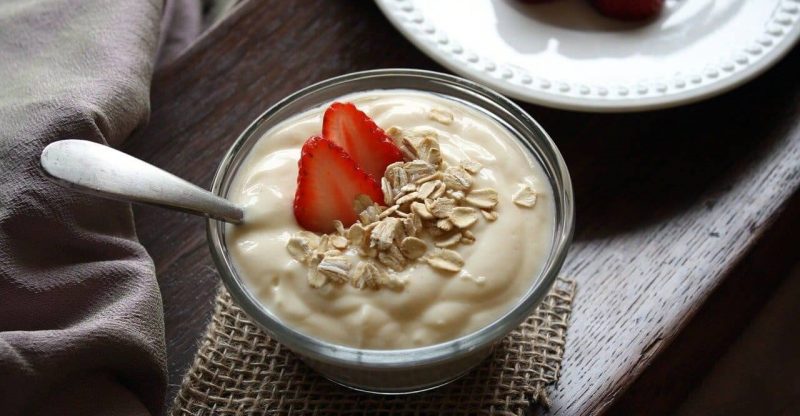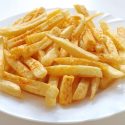What is Modified Corn Starch: Types, vs Corn Starch, is it Gluten Free?

Modified corn starch and native corn starch have been widely used in a variety of products, such as sauces, soups, dairy products, baked goods, confectionery, and meat products. But what’s modified corn starch, is it gluten free, is it GMO free and the advantage over native corn starch?
What is Modified Corn Starch?
Modified corn starch is the modified starch derived from corn (maize). Corn, potato, tapioca and wheat starch are the most commonly used starches. 95% of starch in the United States comes from corn, this percentage in Europe is about 60%. So there is an abundant supply of raw material to produce modified corn starch.
It is produced by physically, chemically or enzymatically treating with native starch to alter its physical and chemical properties to meet a certain food manufacturing.
- Types of Native Corn Starch
- Modified Corn Starch VS Corn Starch
- Why Waxy Maize Starch is Mostly Used to Produce Modified Starch
- Types of Modified Corn Starch
- What is it Made of?
- Is it Gluten Free?
- Is it GMO?
- Is it A Natural Ingredient?
- What’s the Nutrition in it?
- What’s the E Number?
- Modified Corn Starch VS High Fructose Corn Syrup
Types of Native Corn Starch
Corn starch is the raw material to make modified corn starch. Generally, there are three types of sources: standard maize, waxy maize and high amylose maize starch.
- Standard Maize starch: Sticky texture, short molecule structure, regenerate to form opaque gel, slightly grainy taste.
- Waxy Maize starch: High viscosity, long molecule structure, weak regeneration, creamy, high transparency, good stability in low temperature, no starchy taste.
- High amylose maize starch: It requires high temperature (>120℃) to gelatinize to produce viscosity, very short molecule structure, very fast regeneration, and can form a stable opaque gel.
Modified Corn Starch VS Corn Starch?
The application of native starch in food is mainly due to its functional value for a convenient food processing as it provides properties like thickening, emulsification, gelling and binding. Native corn starch is more suitable for foods that are eaten fresh or do not require long-term storage.
However, several properties, e.g. the insolubility in water and instability in the treatment of acid, heat or shear of native starch have limited its application and should be improved to extend its uses.
Therefore, it is necessary to modify these properties of the original starch in order to improve its performance to meet the requirements of a particular food processing.
Why Waxy Maize Starch is Mostly Used to Produce Modified Starch?
Generally, it depends on the percentage of amylose and amylopectin in starch. The contents of amylose and amylopectin in common starch are listed in the following table.
| Common starch types | Amylose % | Amylopectin % |
| Standard maize starch | 24.0% | 76.0% |
| Waxy maize starch | 0.8% | 99.2% |
| High amylose maize starch | 70.0% | 30.0% |
| Potato starch | 20.0% | 80.0% |
| Tapioca starch | 15.0% | 85.0% |
| Wheat starch | 25.0% | 75.0% |
| Rice starch | 18.0% | 82.0% |
The standard maize starch and wheat starch have high amylose content and result in poor stability. Waxy maize starch, tapioca starch and potato starch have low amylose content and so with high stability.
Therefore, if manufacturers need modified starch with higher stability, the raw materials should be with high stability, such as potato starch and waxy maize starch.
Among them, potato starch has good transparency and is mainly applied in foods with special requirements for transparency. Waxy maize starch contains almost no amylose, so it has the strongest stability. After modification, the characteristics of the anti-aging stability, the resistant ability to acid, high temperature and shear are increased.
Types of Modified Corn Starch
The common types are acidulated, acetylated, pregelatinized, hydroxypropylated, cross-linked, enzyme and oxidized modified corn starch.
What is it Made of?
It is composed of amylopectin and amylose (very small for waxy maize), water, fat (very little), protein (very little), and also with other introduced new substituent groups during modification process.
Is it Gluten free?
Yes, modified corn starch is typically gluten-free and people with celiacs can eat it. It is an ingredient commonly found in both gluten-free and gluten-containing food labels.
Modified corn starch is made from maize and waxy maize, as these two types are gluten-free complying with the FDA’s definition of gluten free, that it does not contain wheat, rye, barley, or crossbreeds of these grains. (1)
Is it Genetically Modified (GMO) Free?
Yes, the “modified” in modified corn starch does not mean “genetically modified” which is referring to genetic engineering of the plant DNA. Here, “modified” stands for that the corn starch has been modified by physically, chemically or enzymatically treated to improve its property for uses in food processing and storage.
Is it a Natural Ingredient?
Pregelatinized starch can be regarded as natural while others are artificial.
What’s the Nutrition in it?
Native corn starch has the nutrition: 0.3 g protein, 0.1 g fat and 91 g carbohydrate per 100g, indicated by Wikipedia. Modified corn starch has similar nutrition but it is mainly used for its functionality in food instead of its nutritional value.
What’s the E Number?
It is a category of food additives, and it has the following 12 approved E numbers in Europe:
- Oxidised starch (E1404)
- Monostarch phosphate (E1410)
- Distarch phosphate (E1412)
- Phosphated distarch phosphate (E1413)
- Acetylated distarch phosphate (E1414)
- Acetylated starch (E1420)
- Acetylated distarch adipate (E1422)
- Hydroxypropyl starch (E1440)
- Hydroxypropyl distarch phosphate (E1442)
- Starch sodium octenyl succinate (E1450)
- Acetylated oxidised starch (E1451)
- Starch aluminium octenyl succinate (E1452)
Modified Corn Starch VS High Fructose Corn Syrup
They’re two different products with different uses. High fructose corn syrup (HFCS) is a sweetener produced by converting some of the corn syrup (or glucose, which is also derived from corn starch) to fructose with enzymes. It is a mixture of fructose, glucose and water.
What are the Possible Side Effects?
It is common that sometimes consumers have questions whether modified corn starch is bad for our health and what are the side effects in the food we eat.
E1404, E1410, E1412, E1413, E1414, E1420, E1422, E1440, E1442, E1451 and E1452 are generally considered safe and almost no reported health risks after the studies of short and long-term toxicity, carcinogenicity, reproductive toxicity and other researches by the EFSA in 2017. (2) Maybe some people are allergic or sensitive to it.
Frequently asked questions
Is it Halal?
Yes, it is generally recognised as halal as it is permitted under the Islamic Law and fulfill the conditions of Halal. And we can find some manufacturers certificated with MUI halal.
Is it Kosher?
Yes, it is kosher pareve. It has met all the “kashruth” requirements and can be certified as kosher or maybe kosher passover.
Is it Vegan?
Yes, it is vegan as the manufacturing process without the use of animal matter or products derived from animal origin. So it is appropriate for the diet of vegetarians.
Does it Contain MSG?
No, MSG is fermented from starch by a strain of corynebacterium glutamicum while modified corn starch is a starch modification from chemical, physical, enzyme or other methods.
Can I Eat it On a Gluten Free Diet?
Yes, you can. As it is gluten free.
Can I Eat it with Corn Allergy?
Better not, maybe you’ll be also allergic to it.
Is it a Soluble Fiber?
No, it is not a fiber.
What is the Molecular Weight of Modified Corn Starch?
It depends on the source (from maize or waxy maize) and the type of modification.
In amylose, the glucose monomers are linked by α‐1,4‐glycosidic links while amylopectin also contains α‐1,6‐glycosidic bonds. It was reported by EFSA in 2010 that the molecular weight of amylopectin is 50*10^6 Da and 200*10^3 Da for amylose.
The molecular weight can also be varied according to the different modifications as the diverse new groups, treatments and so on.
Conclusion
Now you may have a knowledge of Modified corn starch, from the following aspects:
- Comparison with cornstarch and high fructose corn syrup
- 12 Types of Modified corn starch, their manufacturing processes and E numbers
- Uses and functions in food
- Safety
- Side effects
- FAQs: is it gluten free, GMO and so on.
What do you think of this ingredient? Let me know in the comments.


Why Modifiy anything? If this causes strokes, this is TERRIBLE to put in Food.
MSG left barely able to walk on holiday in Thailand. This stuff gives me pancreatitis….
very informative, trying to avoid products with these additives is almost impossible